︎The Camera on the Roof︎Damian Loeb︎The Camera on the Roof︎Damian Loeb
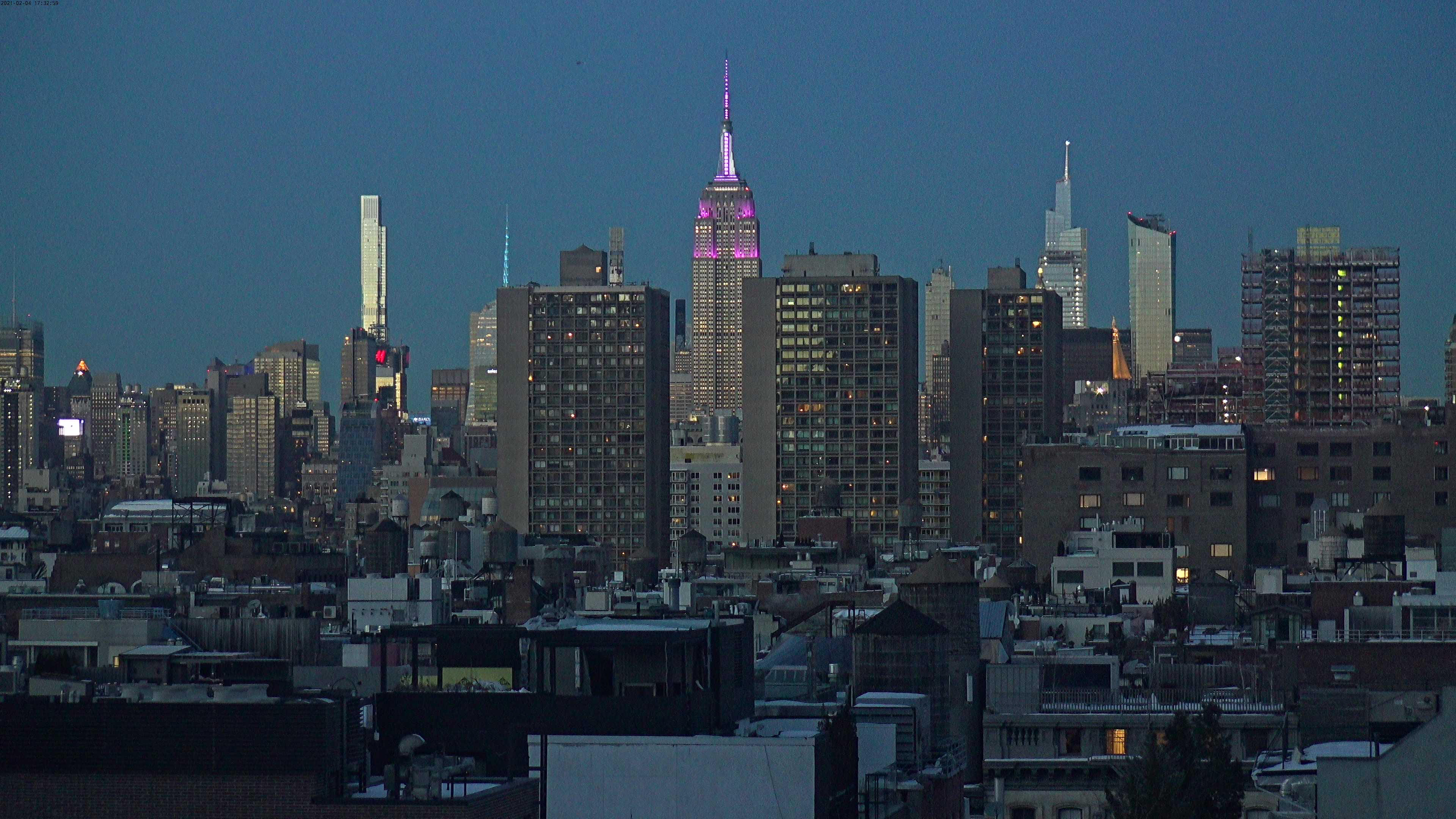
All images by Damian Loeb, 2019-2022.
The Camera on the Roof
Damian Loeb
“All those moments will be lost in time, like tears in rain.”
—Roy Batty, Blade Runner Years and years ago, I mounted a video camera on top of my roof in Tribeca. It is in a very specific location on my co-op’s deck, composing a perfect view of the Empire State Building. It has been recording, in real time, every second since then.
I set up monitors in every room, showing a continuous live feed that captures every lightning strike and plane that passes, every sunrise and sunset, and every new skyscraper rising and altering the New York City skyline. This requires a large amount of hard drives to record it all, and a complicated network to connect and access it.
Initially, the project was driven by the want of a window, since the studio where I work is in the basement, below ground. When I moved to Manhattan, I had a romanticized notion of the city from movies. In the 1980s, everything focused on famous buildings: The World Trade Center, the Chrysler Building, all those high-rises along Central Park.
But to me, the Empire State Building continues to be uniquely special, because of its shape, and how it represents the heart of the city. I lucked out, getting this view. Downtown, too, was another romantic ideal for me, being the center of the art world when I relocated here.
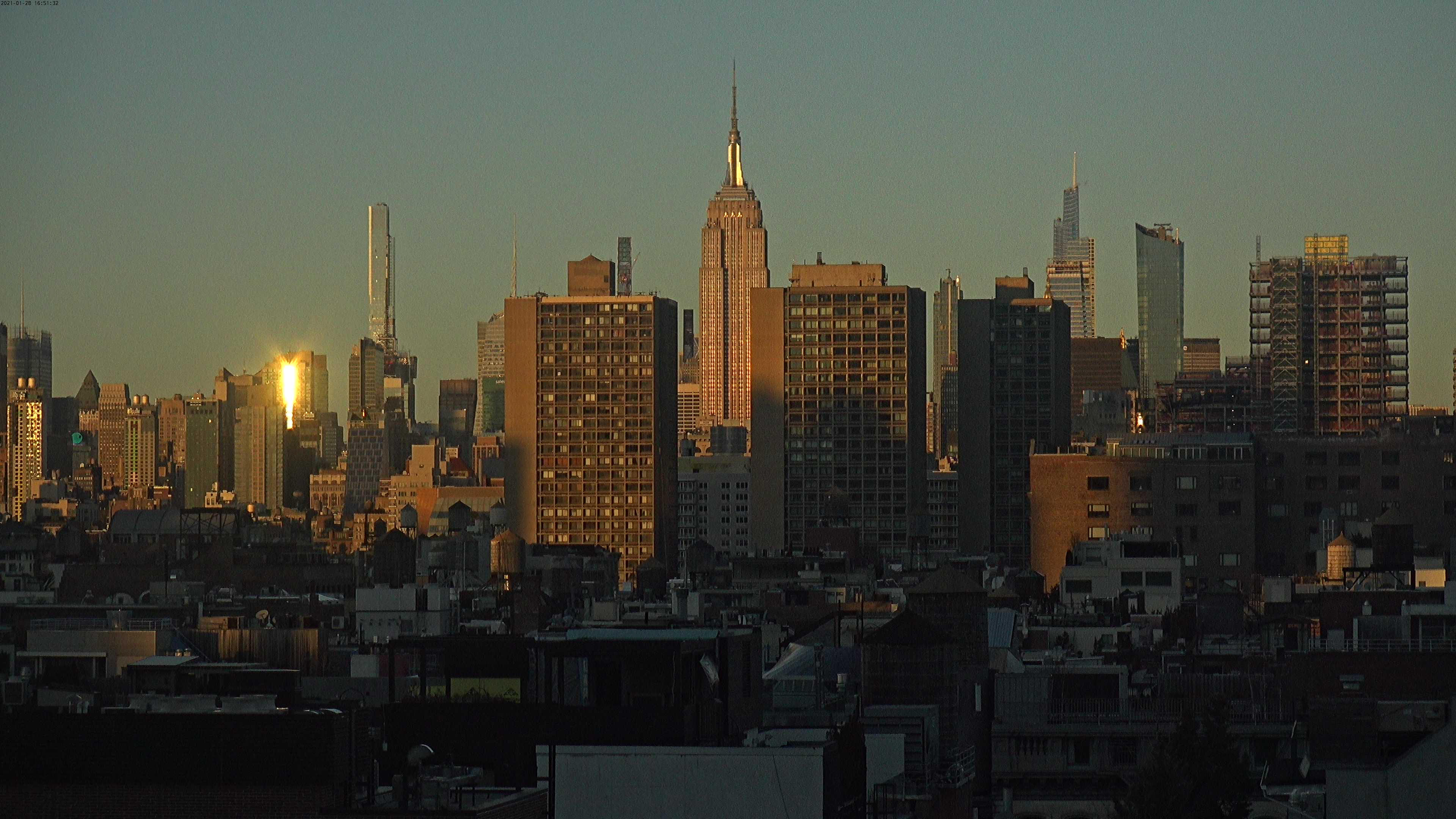
In high school, I was so moved by Andy Warhol’s 1964 movie Empire, a black-and-white, eight-hour film that shows one window’s unchanging portrait of the iconic structure, watching from a few blocks away. It emphasizes the silent indifference of the building’s solitary enormity, and captures the concept of New York City time. My emotional perspective and notions of New York change, but my amazing view has remained relatively the same, looking out at a city that has a life of its own, always moving forward, constantly in blossom.
This rooftop feed serves many purposes. Mainly, it’s a comforting window with a perfect and intentionally composed view. Over time, the scenery became normalized and ubiquitous to me, an unchanging tableau through the days, nights, weeks, and seasons, in which I would only notice the serendipitous variations, whether it be a flock of seagulls briefly drifting by, or clouds obscuring the famous spire.
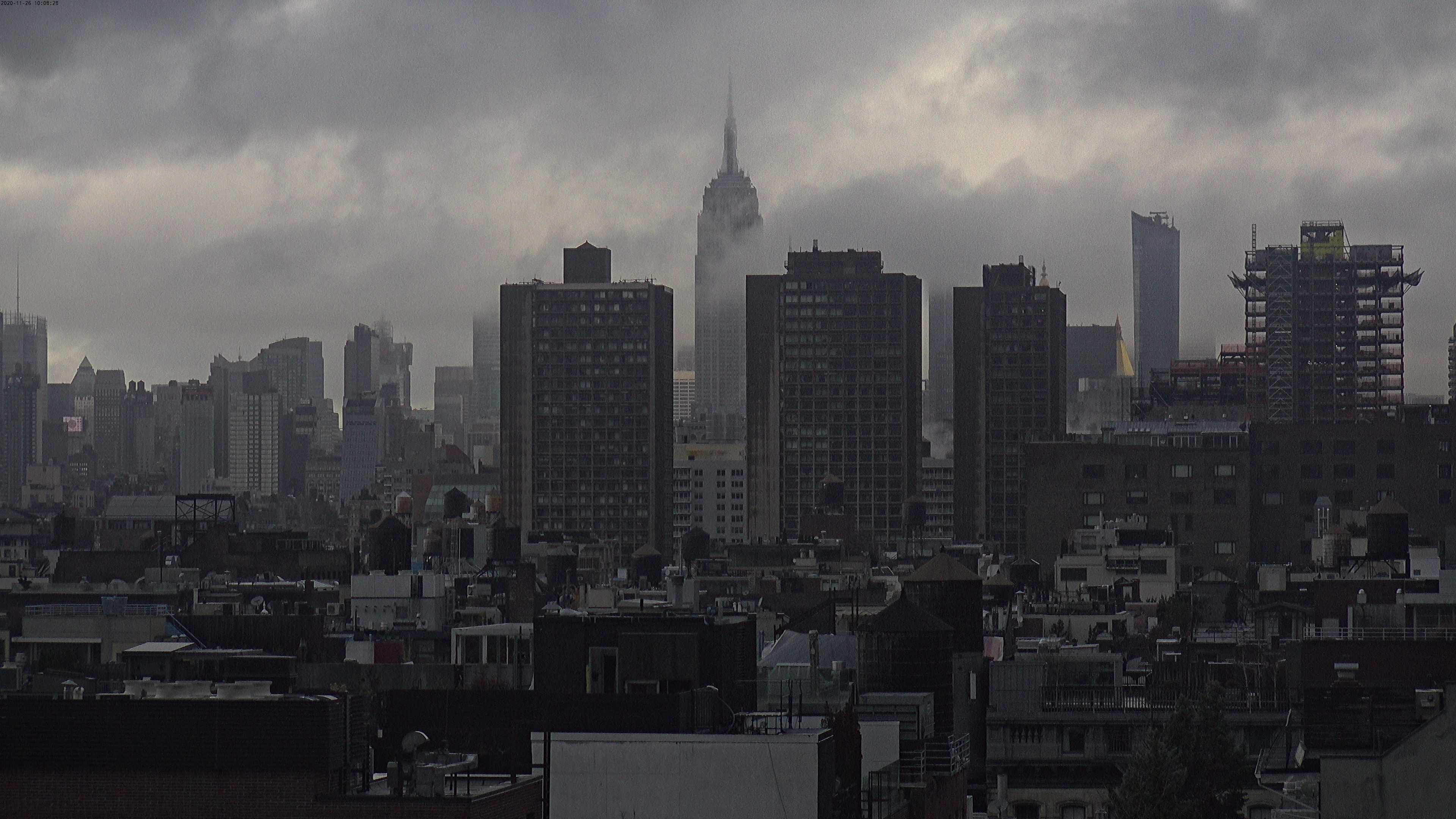

As part of my interest in the digital all-seeing, all-knowing eye, I created a machine to capture the thousands and thousands of hours of this footage. When I say “machine,” I mean something that has a sensor, an action, a script, a limited program telling it what to do. Everything—the computer and the automated components of it—is all connected like a body, with a heart and a brain. It’s always evolving, and I’m always updating it, so I can only describe what it is today: Right now, it includes a PC, large hard drive boxes, the security software, the camera, the monitors, and a joystick controller that moves the camera.
I created special computer scripts that allow me to instantly screenshot a frame from the feed using any mobile device, in the shortest time possible. I can grab a singular instant, put it into a text message, and send it to a friend, so that they are virtually with me for that moment. Each image is time-stamped in tiny numbers up in the left-hand corner, down to the second. Whenever I see something that piques my attention—a shadow, a color cast, or sudden reflection, or if a certain friend suddenly comes to mind—I grab the exact frame using whatever device is nearby, and send the image to them, unaltered. Out of that first serendipitous glance, I create a unique, one-off, connection between myself and the receiver, culminating in a piece of digital artwork that commemorates this shared special moment in time. These captured images are at 4K resolution of the original charge-coupled device. In a digital way, I’m saying: I wish you were here.
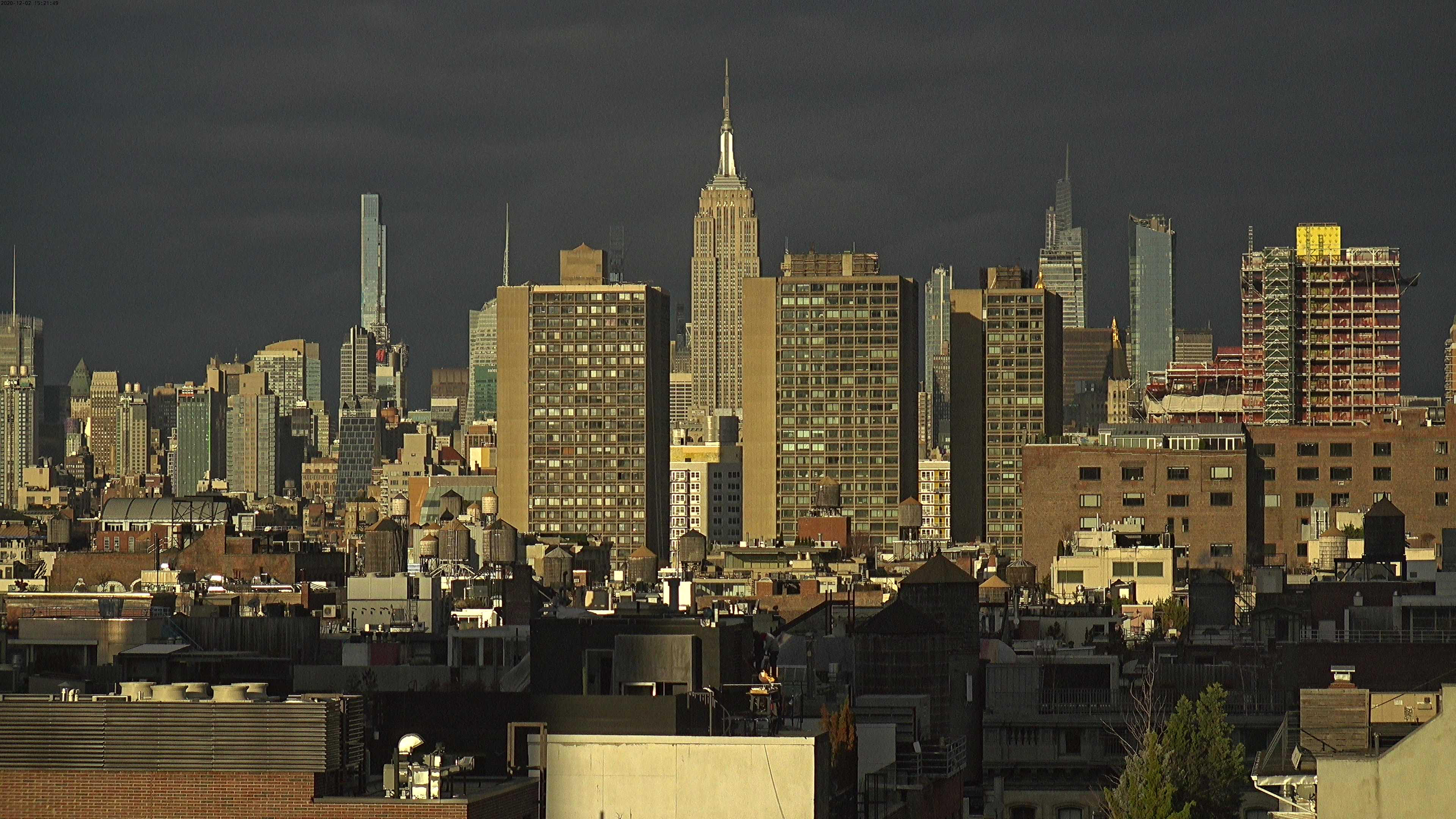
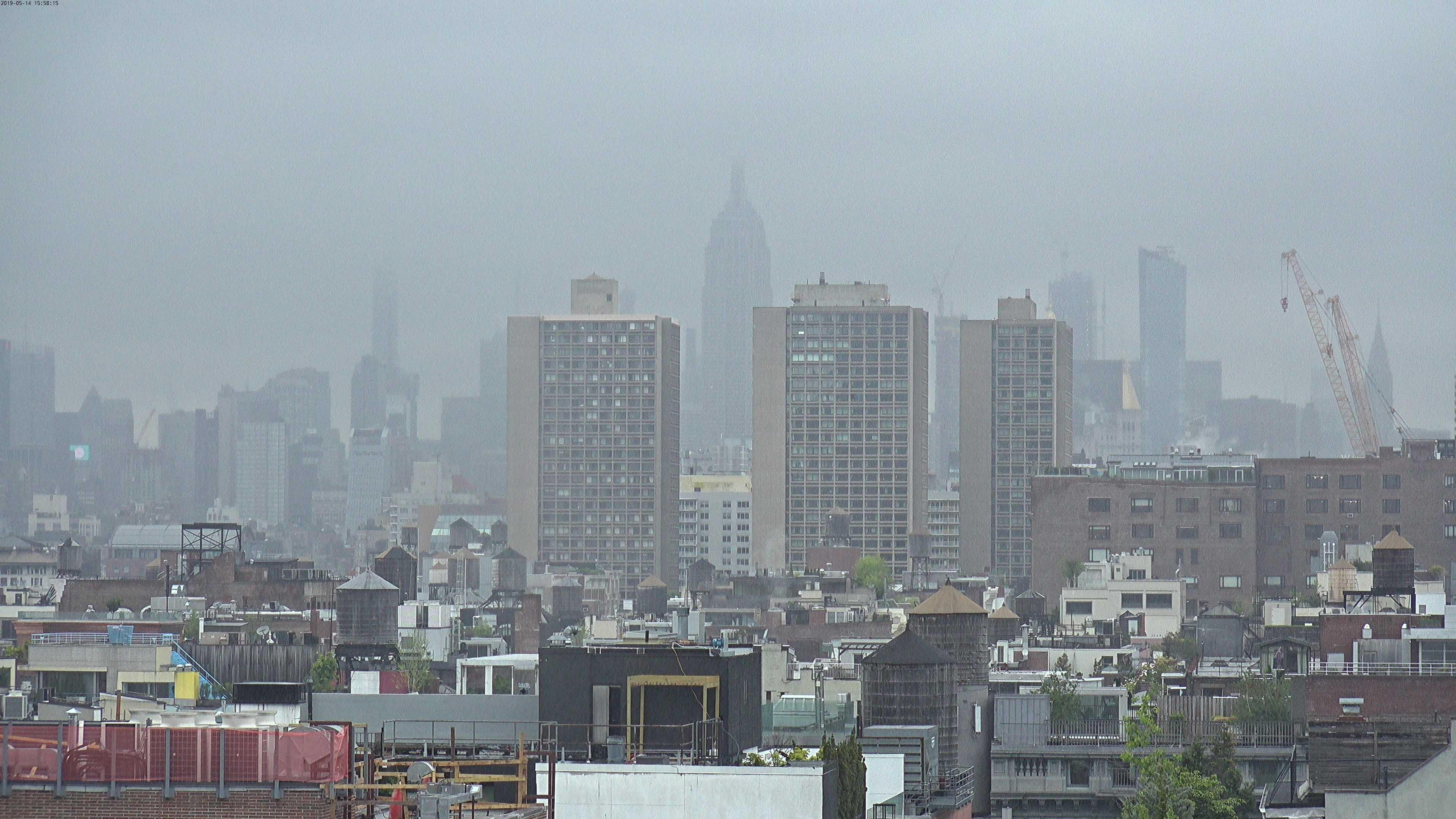
Creating this relationship to the live stream is similar to having a metaverse, threaded with the web of my friends. I have created a database of these subjective captures within these conversations that will be included and used as a source for a second algorithm. (My first algorithm, which I presented at CCAM in 2019 as part of my residency, was about the camera installed at my front door, which takes photographs of all my visitors). This second algorithm will impose my value of beauty; my programming bias would be inherent. It would filter my own view of the city.
︎Creating this relationship to the live stream is similar to having a metaverse.︎Creating this relationship to the live stream is similar to having a metaverse.
Meanwhile, this live stream from the roof will continue to record indefinitely. With this same footage, I also want to build a project that will contain that special magic “thing,” knowing that it will one day be lost. I want to be able to speed forwards and backwards and look at thunderstorms, sunsets, special days in my life, or the beginning of the pandemic. The idea that the city is unmoved by my own personal emotional events fascinates me. I’ve always wondered: Can you see the effects, the differences, and the changes in the image? During lockdown, when airplanes stopped flying, you could actually see a clear difference in the sky.
The ability to rewind and see everything and anything within my views from many years ago up until today just barely satisfies my urge to have control of time. I will make an interface and customize a device to give it the ability to speed up, slow down, and watch any moment. You could get a second chance to look at a day, a moment, and own it in the only way that you can, knowing that it isn’t permanent, accepting that it isn’t permanent. It’s about extending our outlook.

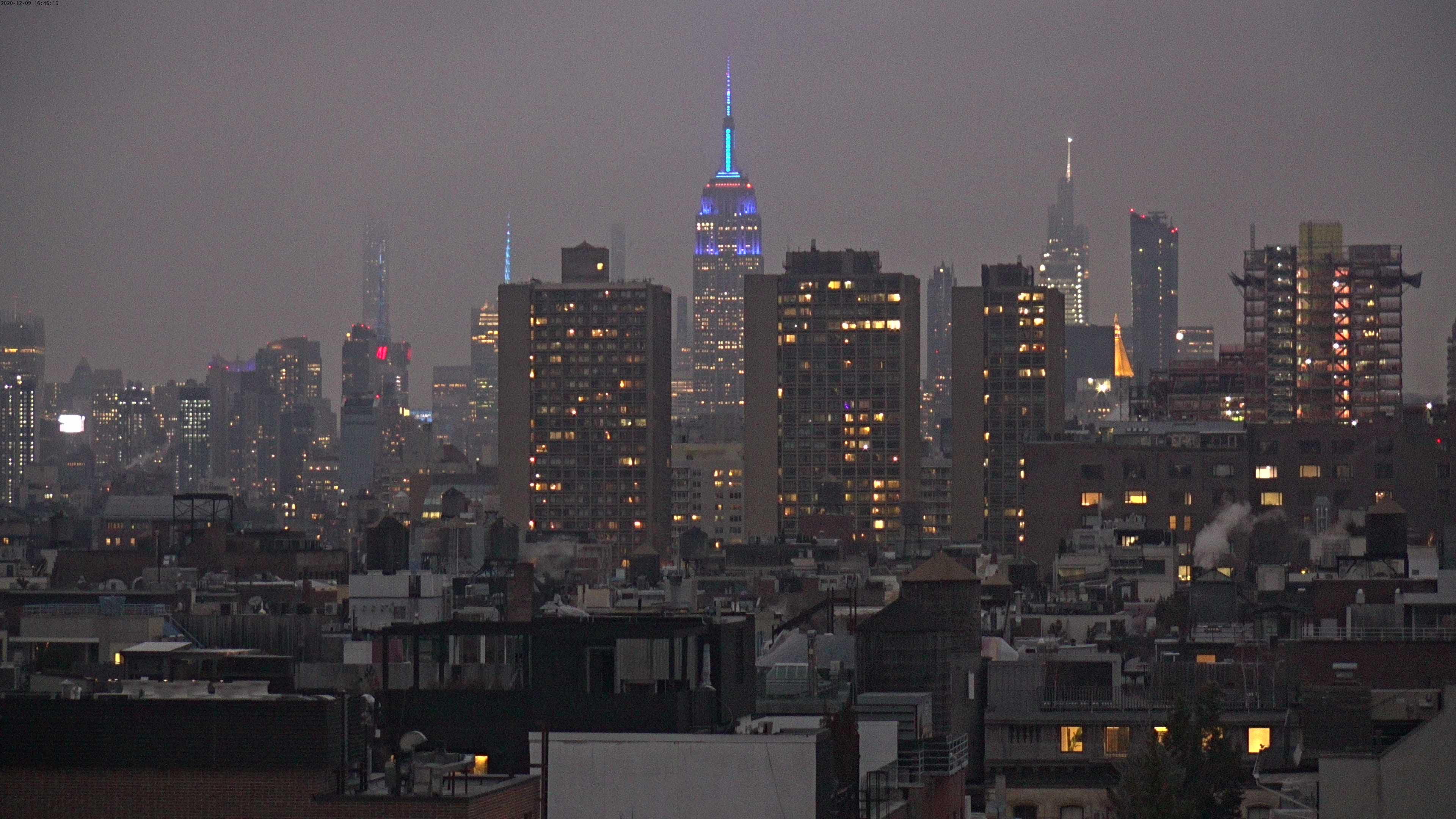
In the end, beauty is king. The things we notice are the pleasing things, sometimes the drama, and definitely serendipity, like the lightning, the birds, the white-outs on the buildings. This interface will allow you to virtually go back and forth over significant moments within a constant vantage point; trying to place the exact instance of an event. You could go back and watch your entire birthday. You could go back and see when a relative was alive. And you could go to the next day when they weren’t. You could think about how different the world was on those two days, when it had that person in it. And the next day it didn’t. You could keep going back and forth over that line. It’s the same experience on either side, from the user’s point of view, except for the personal knowledge of the difference. That’s the great thing about this. The project will outlast you, the stream is constant. You can walk into a river up to your ankles, and the water will always be different; you can always try and swim downstream to catch up with what your experience was. That’s the fascination. You’re getting a small perspective of the past.
I need to consistently back up all that footage onto a separate set of drives. It’s reassuring to know that it just keeps growing and continues, that it will capture everything that is there, this eye that just keeps seeing. My attachment to it made me realize that I don’t want to lose ANY memories; but without action, we will lose those memories. As the AI Replicant android, Roy Batty, laments in his famous death soliloquy in Ridley Scott’s 1982 Blade Runner, his greatest sorrow is that his memories will die with him:
“I’ve seen things you people wouldn’t believe. Attack ships on fire off the shoulder of Orion. I watched C-beams glitter in the dark near the Tannhäuser Gate. All those moments will be lost in time, like tears in rain. Time to die.”
For me, making paintings solidifies some of those things, so they don’t get lost. Photographs fade. Video isn’t solid. Because it is digital, this project is always going to be ephemeral, until any of it is printed. This ephemerality makes this footage experiential. There’s too much data, and always will be.
︎This ephemerality makes this footage experiential.︎This ephemerality makes this footage experiential.
Over the years, the camera on the roof has been vandalized, knocked around by the weather, and rewired. I tried to camouflage it to make it less noticeable. It’s been a challenge to keep it there. The view has shown the cityscape changing, which has been fascinating, despite the addition of some real monstrosities. The composition itself changed recently, as a construction crew working on the roof damaged the part of the building that the camera is mounted on, so it is leaning slowly forward. I am allowing this natural entropy to color the image as a dating technique and a sign of the times—I’m sure that these details will be identified in the images from this period. I have planned a new way to mount the camera. Soon, it will be fixed back to a more secure position; like a re-birth, blind to anything but the now, leaving a continuously changing trail documenting its unbiased observations.